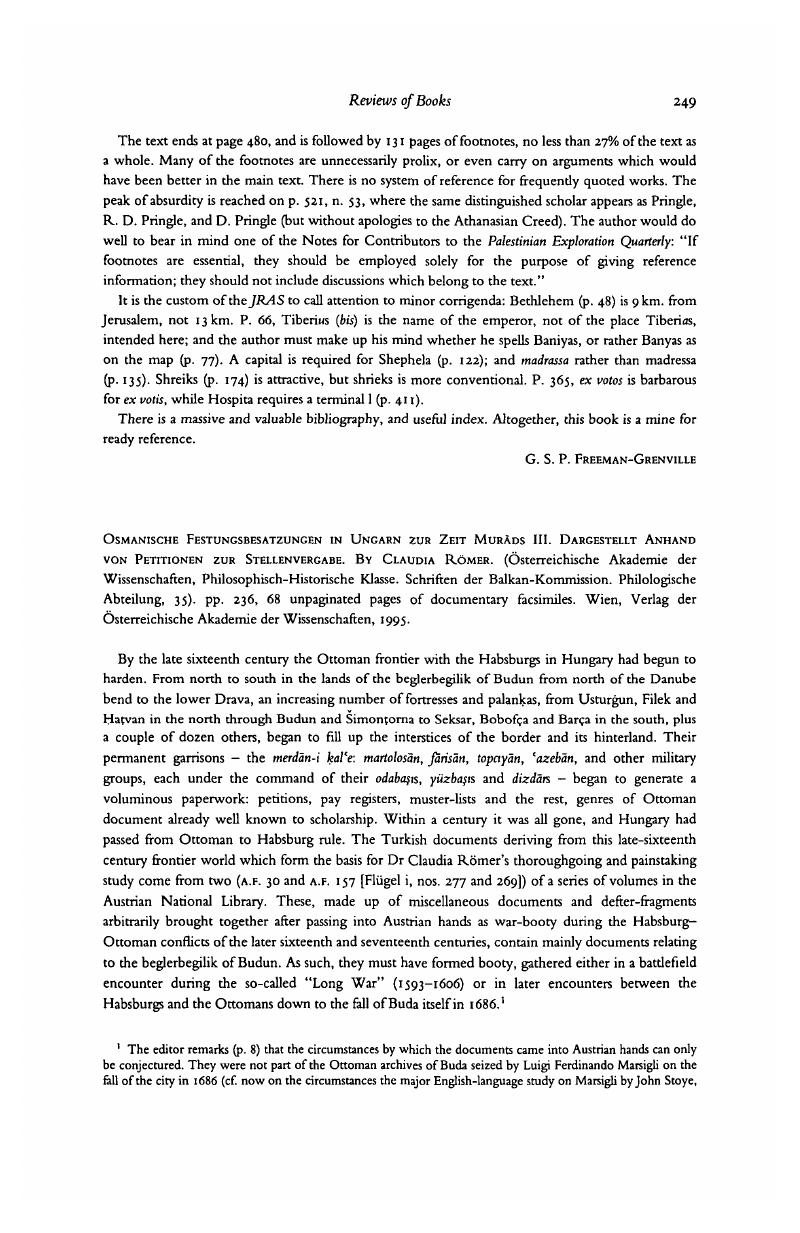No CrossRef data available.
Article contents
Osmanische Festungsbesatzungen in Ungarn zur Zeit Murāds III. Dargestellt Anhand von Petitionen zur Stellenvergabe. By Claudia Römer. (Österreichische Akademie der Wissenschaften, Philosophisch-Historische Klasse. Schriften der Balkan-Kommission. Philologische Abteilung, 35). pp. 236, 68 unpaginated pages of documentary facsimiles. Wien, Verlag der Österreichische Akademie der Wissenschaften, 1995.
Published online by Cambridge University Press: 24 September 2009
Abstract

- Type
- Book Review
- Information
- Copyright
- Copyright © The Royal Asiatic Society 1998
References
1 The editor remarks (p. 8) that the circumstances by which the documents came into Austrian hands can only be conjectured. They were not part of the Ottoman archives of Buda seized by Luigi Ferdinando Marsigli on the fell of the city in 1686 (cf. now on the circumstances the major English-language study on Marsigli by Stoye, John, Marsigli's Europe 1680–1730: the life and times of Luigi Ferdinando Marsigli, New Haven and London, 1994, pp. 45–6)Google Scholar. On the correct identification of other Ottoman defters from Buda, which formed part of the private archive of the last Ottoman pasha, and are now in the Bavarian Staatsbibliotek, Munich, see the reviewer's “The Red Sea trade and Ottoman wakf support for the population of Mecca and Medina in the later seventeenth century”, La vie sociale dans les provinces arabes a I'époque ottomane (ed. Temimi, Abdeljelil), Zaghouan 1988, iii, 165–84, at pp. 1657.Google Scholar
2 Hinds, Martin and Menage, Victor, Qasr Ibrim in the Ottoman period: Turkish and other Arabic documents. (Texts fora Excavations [ed. Tait, W. J.], Eleventh Memoir.) London, Egypt Exploration Society, 1991.Google Scholar
3 Menage, V. L., “On the constituent elements of certain sixteenth-century Ottoman documents”, BSOAS xlviii/2 (1985), 283–304.CrossRefGoogle Scholar
4 Cf. the following recent studies which have an importance for the subject which transcends their immediate subject-matter: Ya. Daškevič, “Ukraininna meži miž Sxodon i Zaxodom (XIV–XVIII St.), Zapiski Naukovoho Tovaristva im. ševčenka. Praci Istorično-filosofs'koi sekdi, ccxxii (L'viv, 1991), 28–44Google Scholar; Khodarkovsky, Michael, “Frontier and non-Christian identities in early modern Russia”, Mappa Mundi. Studia in honorem Jaroslavi Daškevyč septuagenario dedicata (ed. Hrišin, I., Hritsak, Ya.) et al. , L'viv-Kyiv-New York, 1996, 178–98Google Scholar. Cf. also the reviewer's “The Ottoman frontier reconsidered”, to appear in Dan Power and Naomi Standen (eds.), The Frontier in Question, London, 1998.Google Scholar




